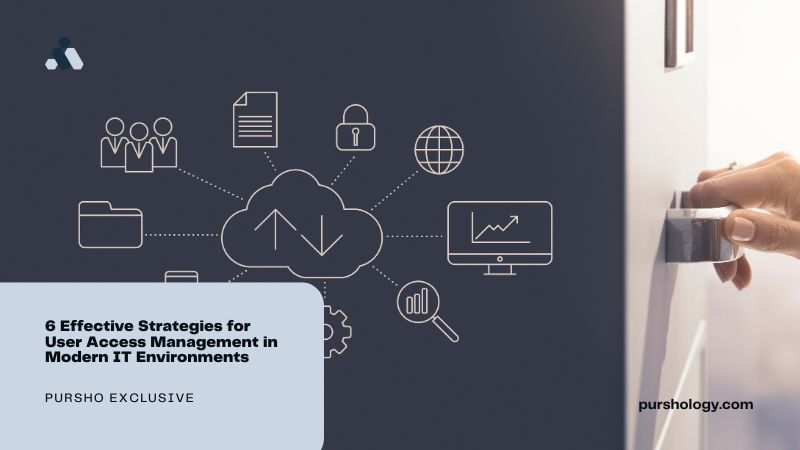Protecting sensitive information and systems from unwanted access is crucial in today’s intricate and dynamic IT environments. Effective user access management (UAM), a crucial element that guarantees only the right people have access to the appropriate resources at the right times for the right purposes, is the foundation of this security.
According to recent data, the global identity and access management (IAM) market recorded revenue of approximately 16.17 billion U.S. dollars in 2023. This shows that traditional access management solutions are no longer enough due to the growing sophistication of cyber threats and the widening perimeter of business networks as a result of remote work.
This blog post explores six user access management solutions that work well and provides tips on how businesses may strengthen their cybersecurity posture. These tactics offer a thorough way of protecting your IT environment from the various security threats it encounters, from putting robust authentication procedures in place to utilizing cutting-edge technology and automation.
Manage User Access
Managing user access to systems and data is a fundamental component of effective strategies for UAM in modern IT environments. It entails carefully controlling who can access and use the digital resources of your company.
The use of automated provisioning is essential to simplifying this procedure. This solution guarantees that access levels are suitably in line with organizational rules and compliance standards, in addition to streamlining the difficult process of issuing or rescinding access permissions based on individual roles and responsibilities. Businesses can manage user access more effectively, safely, and error-free by automating these procedures. This lowers the possibility of illegal access and improves overall IT security posture.
Implement Strong Authentication Methods
The primary obstacle to user access control is authentication, which highlights the need to move past the traditional username and password combination and adopt more secure techniques. By requiring two or more verification factors, multi-factor authentication (MFA) significantly reduces the possibility of unwanted access.
Furthermore, an extra degree of security is added by integrating biometric identification methods like fingerprint or facial recognition. These techniques not only offer a personalized security measure that is hard to duplicate or fabricate, but they also make it far more difficult for potential attackers to get past safeguards. Organizations can greatly improve their security posture and prevent unwanted access to critical data by implementing such strong authentication procedures.
Utilize Role-Based Access Control (RBAC)
To effectively limit system access to authorized users based on their individual positions within your business, use role-based access control. Assign rights to roles rather than to specific people to simplify access control and drastically lower the possibility of users obtaining disproportionate power.
The management of user rights is made easier with this proactive approach to RBAC, which is especially helpful in large organizations where roles and responsibilities frequently change. By concentrating on roles, you can guarantee a security posture that is more dynamic and flexible and that can be quickly adjusted when organizational needs change. This technique not only increases security but also boosts operational effectiveness by simplifying and reducing the error-proneness of authorization management.
Adopt the Principle of Least Privilege (PoLP)
Adopt the principle of least privilege by deliberately allowing users to have access to only the minimal amount of information or authority required to carry out their duties. By using this strategic approach, the potential harm caused by inadvertent or deliberate misuse of access privileges is reduced.
To ensure the enduring effectiveness of PoLP, conduct regular audits and thorough reviews of user privileges. These proactive measures are crucial for verifying that access remains tightly controlled and aligned with current job requirements. Organizations can greatly reduce the risks associated with overprivileged accounts by regularly implementing PoLP. This will improve their overall security posture and ensure compliance and operational efficiency.
Continuous Monitoring and Real-Time Analysis
Keep a close eye on user activity and do real-time access pattern analysis to identify questionable conduct and any security breaches. You can automate threat and anomaly detection with security information and event management (SIEM) solutions, allowing for quick risk reduction.
Moreover, examine user actions and access logs frequently. This thorough analysis helps to improve policies and access restrictions in addition to helping to identify anomalies. By seeing dangers before they materialize, such proactive surveillance helps to prevent security problems and makes sure that the IT infrastructure of your company is safe and resistant to new attacks.
Educate and Train Employees
Among the most important security flaws is human error. Risks can be considerably decreased by teaching and training staff members on the value of cybersecurity, safe online conduct, and adherence to access management guidelines. Organizational security awareness can be promoted by regular training sessions, awareness initiatives, and simulated phishing exercises.
Conclusion
The protection of modern IT environments against the constantly changing threat landscape depends heavily on effective user access control. Organizations can greatly improve their security posture by putting in place robust authentication procedures, applying RBAC, embracing the principle of least privilege, keeping a close eye on user activity, training staff, and deploying automation and cutting-edge technology.
Even though putting these ideas into practice takes time and money, the price of ignoring user access control is much higher than the cost of investing in IT infrastructure security. Robust user access control will become even more crucial as cyber threats become more sophisticated. Put these tactics into practice right now to safeguard vital company assets and guarantee a safe and effective IT environment.




